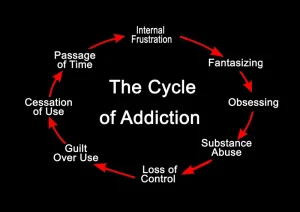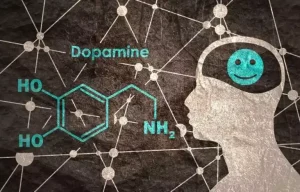
It occurs when a person has difficulty stopping substance use or engaging in a behavior that provides some type of benefit. If you’re worried that you might have alcohol use disorder, don’t try to quit cold turkey on your own. Hosted by therapist Amy Morin, LCSW, this episode of The Verywell Mind Podcast https://ecosoberhouse.com/article/does-alcohol-dehydrate-you/ shares strategies for coping with alcohol cravings and other addictions, featuring addiction specialist John Umhau, MD. Alcohol abuse refers to continuing to use alcohol, often excessively, even though it creates problems in a person’s life, including health, relationship, and work-related consequences.
Pickleball is everywhere. Here’s why the fast-growing sport is good for your health
- There are several special populations which require separate consideration because they have particular needs that are often not well met by mainstream services, or require particular considerations in commissioning or delivering care, or who require modification of general treatment guidelines.
- Abstinent human alcoholics typically relapse to alcohol drinking after acute withdrawal symptoms have subsided.
- Normally, as people age from adolescence to adulthood, they become more sensitive to alcohol’s effects on motor coordination.
- From a clinical standpoint, this is important because it underscores the value of these models in identifying and evaluating new treatment strategies that may be more effective in battling the problem of relapse.
Human studies have found that alcohol ingestion can lower estrogen levels in adolescent girls (Block et al. 1993) and lower both LH and testosterone levels in midpubertal boys (Diamond et al. 1986; Frias et al. 2000a). In both genders, acute alcohol intoxication produces a decrease in GH levels without significant change in either IGF-1 or insulin-like growth factor binding protein-3 (IGFBP3) (Frias et al. 2000b). Finally, there’s the myth that if you relapse after beating your addiction, you have failed. Just like with other diseases, sometimes you need multiple treatments or repeat treatments. Speak with your doctor if you develop a tolerance to your medication or any other substance. If you are taking a prescription medication, your doctor may change the class of medication, which may affect your body in a different way.

Neurobiology and pathophysiology of AUD
AUDIT has replaced older screening tools such as CAGE but there are many shorter alcohol screening tools,[7] mostly derived from the AUDIT. The Severity of Alcohol Dependence Questionnaire (SAD-Q) is a more specific twenty-item inventory for assessing the presence and severity of alcohol dependence. Alcohol dependence is a previous (DSM-IV and ICD-10) psychiatric diagnosis in which an individual is physically or psychologically dependent upon alcohol (also chemically known as ethanol). The common addictions change throughout life often starting in childhood with sugar but progressing on to caffeine, chocolate, nicotine, alcohol, solvents (such as glue sniffing), cannabis and hard drugs.
The Integral Role of Support Groups in Achieving Lasting Sobriety
This theory, however, lacks clear experimental support, and the longer-term effects of alcohol worsen these disorders. Another molecule involved in regulating the body’s stress response is called neuropeptide-Y (NPY). It has a neural and behavioral profile that in almost every aspect is opposite to that of CRF. Moreover, alcohol-dependent rats exhibit decreased NPY content in the central nucleus of the amygdala during withdrawal (Roy and Pandey 2002), physiological dependence on alcohol whereas, as stated above, CRF levels in this brain region are increased in alcohol-dependent animals. Furthermore, stimulation of NPY activity in this brain structure suppresses anxiety-like behavior (Thorsell et al. 2007) and dependence-induced increases in alcohol drinking (Gilpin et al. 2008a). The anatomical distributions of CRF and NPY are highly overlapping, suggesting that one might serve as a “buffer” for the effects of the other.

Studies in England have tended to find over-representation of Indian-, Scottish- and Irish-born people and under-representation in those of African–Caribbean or Pakistani origin (Harrison & Luck, 1997). This may partly be due to differences in prevalence rates of alcohol misuse, but differences in culturally-related beliefs and help-seeking as well as availability of interpreters or treatment personnel from appropriate ethnic minority groups may also account for some of these differences (Drummond, 2009). There are relatively few specific specialist alcohol services for people from ethnic minority groups, although some examples of good practice exist (Harrison & Luck, 1997). There is a high prevalence of alcohol misuse (as well as mental and physical health, and social problems) amongst people who are homeless. The prevalence of alcohol-use disorders in this population has been reported to be between 38 and 50% in the UK (Gill et al., 1996; Harrison & Luck, 1997). In the US, studies of this population typically report prevalence rates of 20 to 45%, depending on sampling methods and definitions (Institute of Medicine, 1988).

Reward Circuits and Neurotransmitter Systems
- In one study, however, adolescent rats exposed to intermittent alcohol never developed this increased sensitivity.
- For example, acute alcohol exposure reduces extracellular glutamate levels in a brain region called the striatum, which contains the nucleus accumbens, among other structures (Carboni et al. 1993).
- This may partly be due to differences in prevalence rates of alcohol misuse, but differences in culturally-related beliefs and help-seeking as well as availability of interpreters or treatment personnel from appropriate ethnic minority groups may also account for some of these differences (Drummond, 2009).
- Alcohol misuse can also lead to job loss and over 38,000 people of working age in England were claiming Incapacity Benefit with a diagnosis of ‘alcoholism’ – nearly 2% of all claimants (Deacon et al., 2007).
- Alcohol dependence is characterized by symptoms of withdrawal when a person tries to quit drinking.
- The kudzu root extract appears to be beneficial in lowering alcohol consumption in heavy drinkers.
Further, the age at which deaths from alcoholic liver disease occur has been falling in the UK, which is partly attributable to increasing alcohol consumption in young people (Office for National Statistics, 2003). A recent investigation focused on alterations of DNA methylation in the promoter region of the DAT (dopamine transporter) gene (Hillemacher et al., 2009a). DAT is responsible for the reuptake of dopamine from the synaptic gap and has therefore a crucial importance for dopaminergic neurotransmission.
1. Effect of Alcohol on Neurotransmitter Systems
- 3In operant procedures, animals must first perform certain response (e.g., press a lever) before they receive a stimulus (e.g., a small amount of alcohol).
- Patients with complex psychological issues related to trauma, sexual abuse or bereavement will require specific interventions delivered by appropriately trained personnel (Raistrick et al., 2006).
The risk of developing a range of health problems increases the more you drink on a regular basis. But as you continue to drink, you become drowsy and have less control over your actions. There are several types of GABAA subunits, and the subunit composition of the receptors differs among different brain regions and may change in response to environmental changes. 6A third FDA-approved medication to treat alcohol dependence (disulfiram; Antabuse®) targets alcohol metabolism.
Get Help For Physical Alcohol Dependence
